-
About
- About Listly
- Community & Support
- Howto
- Chrome Extension
- Bookmarklet
- WordPress Plugin
- Listly Premium
- Privacy
- Terms
- DMCA Copyright
- © 2010-2025 Boomy Labs


 Aysin Alp
Aysin Alp
Listly by Aysin Alp
Here is a list with resources for ad literacy.

One of the units we teach in our Intermediate English classes is on persuasive writing. We do a brief study of advertising as part of it, and I thought a "The Best..." list on ads might be useful.

Ad*Access Images and database information for over 7,000 advertisements printed in U.S. and Canadian newspapers and magazines between 1911 and 1955. Five main subject areas: Radio, Television, Transportation, Beauty and Hygiene, and World War II. Adbusters Culture Jammers From the folks who bring us "Buy Nothing Day," ads against ads, or, more properly, against the materialistic mindset.
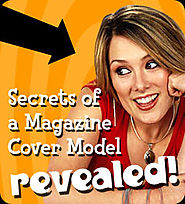
The Don't Buy It Web site encourages young people, especially those 9-11 years old, to think critically about media - television, radio, magazines, the Web, advertising, and more.
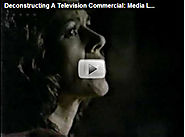
Deconstructing a TV Commercial: Media Literacy Lesson plan created by Frank W. Baker, media educator- copyright 2009 For years, ever since I first saw this commercial, I have been using this ad in my media literacy workshops.
Funny spots! Spots that will amaze you, astound you, even make you cry. 128 spots in all.

Decipher the messages behind ads that you see everyday. View the pages in these interactive magazines and learn about the messages behind the ads you see every day. Learning about the messages behind the ads will help you understand the differences between real vs. ideal and know the truth will help you craft a positive self-image!
Welcome to ftc.gov/YouAreHere where kids learn to be smarter consumers

Teaching Resources for KS2 - posters showing the features of advertising texts. Includes What is an advertisement? Eye-Catching Colours, Scintillating Senses, Hillarious Humour, Quizzical Questions, Wonderful Words, Super Slogans, Exciting Exaggeration, Delicious Descriptions and Powerful Promotion. Each posters looks at a different feature of advertisement text genre writing

Certain words can incite an emotional response in us - a fact that's not lost on advertisers and copywriters. The language that's used in advertising is deliberate in its attempt to create a positive impression of the product or service.

ReadWriteThink couldn't publish all of this great content without literacy experts to write and review for us. If you've got lessons plans, videos, activities, or other ideas you'd like to contribute, we'd love to hear from you. Find the latest in professional publications, learn new techniques and strategies, and find out how you can connect with other literacy professionals.
BACKGROUND Your students may be aware of the techniques used by advertisers to sell products and services. They may be less conscious of the purposes and intents of advertisements that try to shape their opinions and affect their behavior. In this activity, they look for and analyze examples of those ads.

A successful advertisement creates a desire in viewers, listeners or readers. It also provides information on how to fulfill that desire and makes the potential customer feel good about doing so. With so many products and service providers in the marketplace, using a proven technique in your advertising increases the likelihood that your ad dollars will return value.

This interactive unit is designed to help kids between the ages of 5 and 8 recognize the marketing techniques used on commercial websites that target children.

In this lesson, students are introduced to the idea of online advertising and look at the ways that marketers create immersive and appealing online environments that draw and hold children's attention. After studying common advertising techniques, students play an educational game online that lets them put their learning into action by "creating" a site advertising a fictitious cereal, Co-Co Crunch.

In this lesson, students will learn about the concept of branded content and will learn to differentiate between branded images and videos and non-branded images and videos in online and offline contexts through a series of questions and discussions.
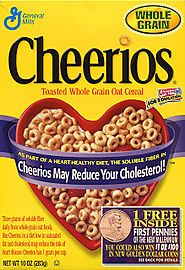
Question It Wiki Don't Buy It Digital Difference Storyboard Brand Me Branding of America Company and Product Mascots Company Slogans-1 Company Slogans-2 Company Slogans-3 Corporate Logos-1 Corporate Logos-2 Car Logos Media Smart Kids Street Sign Gallery Buckley Library Buckley Home

You will create a multimedia presentation with an embedded iMovie about your topic and present this information to other students to help them learn how to question media messages for information. Presentations should teach students how to deconstruct media messages and learn what techniques advertisers use to influence them.

Slogans are memorable phrases often used in conjunction with company logos and in advertising campaigns. They are claimed to be the most effective means of drawing attention to one or more aspects of a product or brand. But how often do you see "serving you since 1982" or a similarly canned slogan under a beautifully designed logo?

A slogan is the most important advertisement a company can have. Follow these five tips and you'll have an excellent tagline in no time.
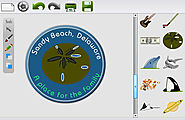
Logo Maker is the newest generator on MrNussbaum.com. Make your own colorful logos using resizable shapes, borders, and icons. Add and modify text using different fonts, colors, and our "bend text" feature which allows you to bend text to fit the curves of a circle.
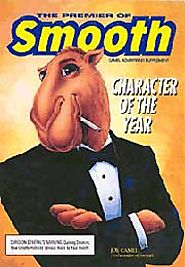
In 1998, the American tobacco industry ended a slew of health-related lawsuits by agreeing to make annual payments to the states worth $246 billion. The settlement also included restrictions on advertising that might attract teenagers. Among these were a ban on billboards and cartoon characters such as R.J. Reynolds' Joe Camel.
News, Reviews, Previews and History of Super Bowl Advertising. Watch the latest previews, teasers, and full commercials. XLIX VOTE on your favorite ads!
